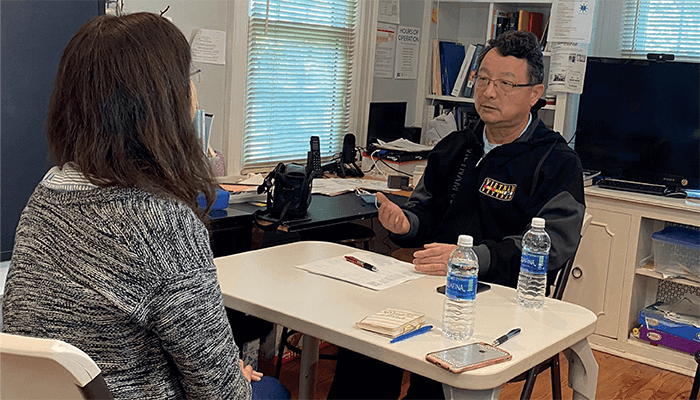
COVID-19 pandemic-associated lockdowns had a profound impact on our daily activities – and they significantly changed the experiences of medical students applying for residency and training. It was during one of these lockdowns that I had my own unique teaching experience.
Having spent 15 years teaching medical students how to apply for residency interviews, I thought I had seen everything – but I was wrong. Several medical graduates, both US and international, hadn’t succeeded in their residency applications (general surgery, anesthesiology, radiology, and pathology) during lockdown and were considering applying for a pathology residency in 2022. Thanks to a nationwide clinical volunteer medical association and my online resources on applying for residency, these aspiring pathologists discovered that I offered hands-on externships for medical graduates interested in not only pathology, but other residencies as well, and that my students’ success rate was almost 75 percent – so they came to New York to train with me. These were dedicated, engaged students who truly wanted to learn – so much so, in fact, that one mother of two actually drove the 1,300 km between her city and mine overnight and began her training in the morning immediately upon arrival!
Based on each student’s situation and background, I devised an individual training curriculum that included an introduction to pathology and pathologists’ work. It covered:
What is pathology?
What are pathologists’ daily responsibilities?
Why are pathologists called “the doctors’ doctor?”
What role do pathologists play in the patient’s healthcare team?
Basic laboratory skills
Basic diagnoses with accompanying differentials
Biopsy reporting formats
Writing abstracts, case reports, and review articles
Successful residency interviewing and techniques to answer challenging questions
Within one month, I gave my students hands-on experience in performing frozen sections in a private diagnostic laboratory – a technique that can be challenging for residents, fellows, and even some junior attendings who start their surgical pathology on-call service in the first six months of their practice. Under my guidance, they followed lab technicians to master accessioning, registering, and grossing biopsies, some large surgical excision specimens such as hysterectomy, mastectomy, wide skin excision, and colectomy, as well as handling urine and Pap smear cytology specimens and performing FISH studies on COVID-19 samples. In a gastroenterologist’s office, I showed them how to sign out GI biopsy cases, read slides under the microscope to differentiate normal histological tissue from pathological changes, establish differential diagnoses, and ultimately reach the correct diagnosis. When signing out malignant biopsies, I demonstrated how to communicate immediately with the clinician to explain the pathological findings, possible limitations on staging because of sampling reason, some relevant molecular studies and their significance for treatment and prognosis. In combination with textbook-based study, this syllabus prepared the students well for the USMLE Step 2/3 board examinations.
Because some of them had no scientific research experience and no publication history – key career aspects evaluated in pathology residency applications – I taught them how to write interesting case summaries and reports. After the externship, I even recommended writing an interesting case report and a summary paper on the experience of learning anatomic pathology and developing an understanding of pathologists’ work. Both pieces were ultimately published.
I also helped the students rehearse for virtual residency interviews and tackle the tough questions we knew would come up. “What’s your weak point?” “Why have your previous applications failed?” “What do you know about pathology?” We practiced until they had built up confidence and could answer those questions with ease.
In the next interview season, several students received invitations from academic programs, including top-tier schools – and, on Match Day 2022, they successfully and happily matched to excellent pathology programs where they could pursue their dream careers. I am very proud of them for their success – and of myself for the training I designed and delivered. Lockdown restrictions certainly offered the opportunity for a unique teaching and training experience!
I remember a mentor telling me that “a good pathologist should be a good physician, as well as a good teacher.” I have done my best to meet those expectations and I am proud to be a surgical pathologist – and a teacher.




